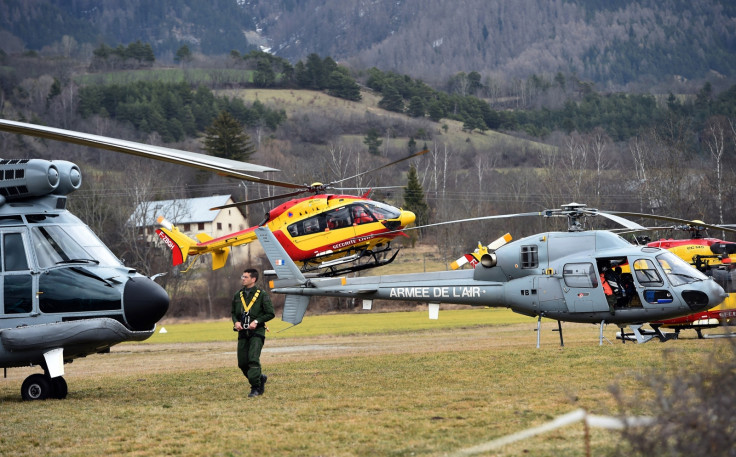Germanwings A320 crash: Retrieving bodies from French Alps could take days

It could take several days to retrieve the bodies of those killed in the Germanwings A320 air crash, with car sized-debris spread across acres in the French Alps in the vicinity where the Airbus carrying 144 passenger and six crew came down on 24 March 2015.
Authorities in helicopters reached the crash site near the hamlet of Barcelonette in the southern French Alps, where Germanwings Flight 4U 9525 travelling from Barcelona to Dusseldorf came down around 10.47am local time, at an altitude of about 2,000 metres (6,550 feet.)
Witnesses described a scene of devastation: "The debris is scattered over an area of about one hectare, very difficult to access," Lt. Col. Bloy, gendarmerie Hyères (Var), in Haute-Provence, told Le Figaro.
He said that the area where the plane had crashed was "very steep, rugged mountainside". He added, "It could take several days to evacuate the bodies of the crash zone."
Bloy said that emergency services could access the site by helicopter, but would be unable to land because of the steep terrain. He said there was "no hypothesis" yet about the cause of the disaster.
Local MP Christophe Castaner described the scenes at the crash site as "appalling" after flying over it by helicopter with French interior minister Bernard Cazeneuve. "There is nothing left but debris and bodies," he tweeted.
Local councillor Gilbert Sauvan told Les Echos newspaper, that more than 500 police, firefighters and other members of the emergency services had been mobilised in the wake of the crash.
"The plane is completely disintegrated. The largest debris is the size of a car," said Sauvan. "The area of the crash is inaccessible except with a helicopter."
French authorities earlier said that there were no survivors of the crash.
© Copyright IBTimes 2024. All rights reserved.






